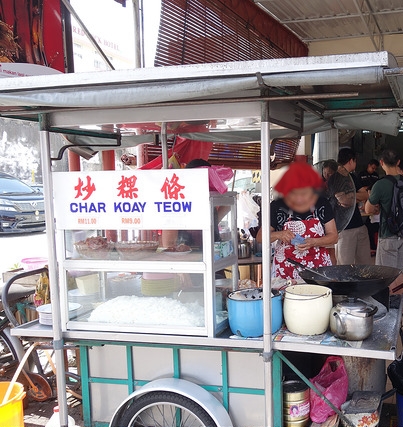|
Speak Hokkien Campaign
Speak Hokkien Campaign (, Tâi-lô: ''Kóng Hok-kiàn-uā Ūn-tōng'') is a social movement dedicated to the language revitalization of the Hokkien language. The campaign was launched online by some Hokkien speakers from Penang, Malaysia, and is committed to maintaining and expanding the use of Hokkien. See also * Hoklo people * Hokkien culture * Hokkien architecture * Written Hokkien * Hokkien media * Southern Malaysia Hokkien * Penang Hokkien * Taiwanese Hokkien * Medan Hokkien * Singaporean Hokkien * Amoy dialect * Lan-nang-ue (Philippine dialect of Hokkien) * Protection of the Varieties of Chinese * Universal Declaration of Linguistic Rights The Universal Declaration of Linguistic Rights (known also as the Barcelona Declaration) is a document signed by the International PEN Club, and several non-governmental organizations in 1996 to support linguistic rights, especially those of endan ... References External linksOfficial website Hokkien Language revival {{Sino ... [...More Info...] [...Related Items...] OR: [Wikipedia] [Google] [Baidu] |
Penang Hokkien
Penang Hokkien (; Tâi-lô: ''Pin-siânn Hok-kiàn-uā''; ; ) is a local variant of Hokkien spoken in Penang, Malaysia. It is spoken as a mother tongue by 63.9% of Penang's Chinese community, and also by some Penangite Indians and Penangite Malays as a third language spoken by these two other ethnic groups. It was once the ''lingua franca'' among the majority Chinese population in Penang, Kedah, Perlis and northern Perak. However, since the 1980s, many young speakers have shifted towards Malaysian Mandarin, under the Speak Mandarin Campaign in Chinese-medium schools in Malaysia, even though Mandarin was not previously spoken in these regions. Mandarin has been adopted as the only language of instruction in Chinese schools and, from the 1980s to mid-2010s, the schools had rules to penalize students and teachers for using non-Mandarin varieties of Chinese. Penang Hokkien is a subdialect of Zhangzhou (漳州; ''Tsiang-tsiu'') Chinese, with widespread use of Malay and Englis ... [...More Info...] [...Related Items...] OR: [Wikipedia] [Google] [Baidu] |
Written Hokkien
Hokkien, a Min Nan variety of Chinese spoken in Southeastern China, Taiwan and Southeast Asia, does not have a unitary standardized writing system, in comparison with the well-developed written forms of Cantonese and Vernacular Chinese (Mandarin). In Taiwan, a standard for Written Hokkien has been developed by the Republic of China Ministry of Education including its Dictionary of Frequently-Used Taiwan Minnan, but there are a wide variety of different methods of writing in Vernacular Hokkien. Nevertheless, vernacular works written in the Hokkien are still commonly seen in literature, film, performing arts and music. History Prior to the modern era, the main written language of China was Classical Chinese, which has grammar and vocabulary based on Old Chinese used in ancient times. Whilst the written form of Chinese mostly remained static, the spoken varieties of Chinese diverged from Old Chinese. In the early 20th century, reformers in China saw the need for language reform and ch ... [...More Info...] [...Related Items...] OR: [Wikipedia] [Google] [Baidu] |
Lan-nang
Philippine Hokkien is a dialect of the Hokkien language of the Southern Min branch, primarily spoken vernacularly by Chinese Filipinos in the Philippines, where it serves as the local Chinese ''lingua franca'', primarily spoken as an oral language, within the overseas Chinese community in the Philippines and acts as the heritage language of a majority of Chinese Filipinos. The use of Hokkien in the Philippines is influenced by Philippine Spanish, Filipino ( Tagalog) and Philippine English. Terminology The term ''Philippine Hokkien'' is used when differentiating the variety of Hokkien spoken in the Philippines from those spoken in China, Taiwan, Malaysia, Singapore, Indonesia, and other Southeast Asian countries. Historically, it was also known in Philippine English, Filipino ( Tagalog), and other Philippine languages as ''Fookien'' or ''Fukien'' across the country, derived from the Chinese postal romanization of the Nanjing court dialect Mandarin reading of Fujian province in ... [...More Info...] [...Related Items...] OR: [Wikipedia] [Google] [Baidu] |
Amoy Dialect
The Amoy dialect or Xiamen dialect (), also known as Amoynese, Amoy Hokkien, Xiamenese or Xiamen Hokkien, is a dialect of Hokkien spoken in the city of Xiamen (historically known as "Amoy") and its surrounding metropolitan area, in the southern part of Fujian province. Currently, it is one of the most widely researched and studied varieties of Southern Min. It has historically come to be one of the more standardized varieties. Amoynese and Taiwanese are both historically mixtures of Quanzhou and Zhangzhou dialects. As such, they are very closely aligned phonologically. There are some differences between the two, especially lexical, as a result of physical separation and the differing histories of mainland China and Taiwan during the 20th century. Amoynese and Taiwanese are mutually intelligible. Intelligibility with other Hokkien, especially inland, is more difficult. By that standard, Amoynese and Taiwanese may be considered dialects of a single language. Ethnolinguisticall ... [...More Info...] [...Related Items...] OR: [Wikipedia] [Google] [Baidu] |
Singaporean Hokkien
Singaporean Hokkien is a local variety of the Hokkien language spoken natively in Singapore. Within Chinese linguistic academic circles, this dialect is known as Singaporean Ban-lam Gu. It bears similarities with the Amoy spoken in Amoy, now better known as Xiamen, as well as Taiwanese Hokkien which is spoken in Taiwan. Hokkien is the Min Nan pronunciation for the province of Fujian, and is generally the term used by the Chinese in Southeast Asia to refer to the 'Banlam' dialect. Singaporean Hokkien generally uses Amoy as its standard, and its accent is predominantly based on a mixture of Quanzhou and Zhangzhou speech, with a greater inclination towards the former. Like many spoken languages in Singapore, Singaporean Hokkien is influenced by other languages or dialects spoken in Singapore. For instance, Singaporean Hokkien is influenced to a certain degree by Teochew, and is sometimes regarded as a combined Hokkien–Teochew speech. In addition, it has many loanwords from Sing ... [...More Info...] [...Related Items...] OR: [Wikipedia] [Google] [Baidu] |
Medan Hokkien
Medan Hokkien is a local variety of Hokkien spoken among Chinese Indonesians in Medan and Jakarta, Indonesia. It is the ''lingua franca'' in Medan as well as other northern city states of North Sumatra surrounding it, and is a subdialect of the Zhangzhou (漳州) dialects, together with widespread use of Indonesian and English borrowed words. It is predominantly a spoken dialect: it is rarely written in Chinese characters as Indonesia had banned the use of Chinese characters back in New Order era. Comparing Medan Hokkien to other Hokkien dialects in countries such as Malaysia and Singapore, Medan Hokkien is still understandable to a certain extent. Medan Hokkien speakers may have a similar accent as Malaysian and Singaporean speakers. The closest comparison to Medan Hokkien is Penang Hokkien. Both are so similar that it is hard to tell the difference between the two if the Medan Hokkien speaker does not mix Indonesian language borrowings in their conversation. See also * Hokl ... [...More Info...] [...Related Items...] OR: [Wikipedia] [Google] [Baidu] |
Taiwanese Hokkien
Taiwanese Hokkien () (; Tâi-lô: ''Tâi-uân-uē''), also known as Taigi/Taigu (; Pe̍h-ōe-jī/Tâi-lô: ''Tâi-gí / Tâi-gú''), Taiwanese, Taiwanese Minnan, Hoklo and Holo, is a variety of the Hokkien language spoken natively by about 70%+ of the population of Taiwan. It is spoken by a significant portion of Taiwanese people descended from immigrants of southern Fujian during the Qing dynasty. It is one of the national languages of Taiwan. Taiwanese is generally similar to spoken Amoy dialect, Amoy Hokkien, Quanzhou dialect, Quanzhou Hokkien, and Zhangzhou dialect, Zhangzhou Hokkien, as well as their dialectal forms used in Southeast Asia, such as Singaporean Hokkien, Penang Hokkien, Philippine Hokkien, Medan Hokkien, & Southern Peninsular Malaysian Hokkien. It is Mutual intelligibility, mutually intelligible with Amoy dialect, Amoy Hokkien and Zhangzhou dialects, Zhangzhou Hokkien at the mouth of the Jiulong River (九龍) immediately to the west in mainland China and wit ... [...More Info...] [...Related Items...] OR: [Wikipedia] [Google] [Baidu] |
Southern Peninsular Malaysian Hokkien
Southern Malaysian Hokkien () is a local variant of the Min Nan Chinese variety spoken in Central and Southern Peninsular Malaysia ( Klang, Melaka, Muar, Tangkak, Segamat, Batu Pahat, Pontian and Johor Bahru). Due to geographical proximity, it is heavily influenced by Singaporean Hokkien. This dialect is based on Quanzhou-accented varieties of Min Nan, including the Eng Choon (Yongchun) dialect. It is markedly distinct from Penang Hokkien and Medan Hokkien, which are based on the Zhangzhou dialect. Similar to the situation in Singapore, the term ''Hokkien'' is generally used by the Chinese in South-east Asia to refer to Min Nan Chinese (闽南语). Southern Malaysian Hokkien is based on the Quanzhou dialect with some influence from the Amoy dialect. Phonology This section is based on Eng Choon (Yongchun) Hokkien spoken in Melaka. Vowels There are eight phonemic vowels: Tones There are seven tones, five of which are long tones and two are checked tones. Like other v ... [...More Info...] [...Related Items...] OR: [Wikipedia] [Google] [Baidu] |
Hokkien Media
Hokkien media is the mass media produced in Hokkien. Taiwan is by far the largest producer of Hokkien-language media. The "golden age" of both Hokkien popular music and film in Asia was the mid-1950s through to the mid-1960s. Films Many films in Taiwan are produced in Hokkien. Many other films that are primarily in Mandarin or some other language may also have some Taiwanese dialogue. The first Hokkien films shown in Taiwan were shot in Hong Kong and featured dialogue in the Amoy dialect. The increasing popularity of Amoy films in Taiwan drew audiences away from Taiwanese opera performances, so some troupe leaders began making films in Taiwanese Hokkien. Over 1,000 Hokkien-language films were made in Taiwan between 1956 and 1961. The popularity of Amoy films, established in the early 1950s, then fell, and was overtaken by Taiwanese Hokkien films. By 1981, the number of Taiwanese Hokkien films made numbered 2,000. However, censorship during Taiwan's White Terror period heavily a ... [...More Info...] [...Related Items...] OR: [Wikipedia] [Google] [Baidu] |
Hokkien Architecture
Hokkien architecture, also called Hoklo architecture or Minnan architecture, refers to the architectural style of the Hoklo people, the Han Chinese group who have historically been the dominant demographic of the Southern Chinese province of Fujian (called "Hokkien" in the Hoklo language), Taiwan, and Singapore. This style shares many similarities with those of surrounding Han Chinese groups. There are, however, several features that are unique or mostly unique to Hoklo-made buildings, making many traditional buildings in Hokkien and Taiwan visually distinctive from those outside the region. Minyue architecture Prior to the annexation of the Minyue Kingdom by the Han dynasty, the region was inhabited by the Minyue people, a branch of the Baiyue aboriginals. The Minyue State's Imperial City (Traditional Chinese: 閩越王城遺址) gave some clues about what their architectural style was like. Swallowtail roof Swallowtail roof (Pe̍h-ōe-jī: ìnn-bé-tsiah; Traditional Chinese: ... [...More Info...] [...Related Items...] OR: [Wikipedia] [Google] [Baidu] |
Social Movement
A social movement is a loosely organized effort by a large group of people to achieve a particular goal, typically a social or political one. This may be to carry out a social change, or to resist or undo one. It is a type of group action and may involve individuals, organizations, or both. Social movements have been described as "organizational structures and strategies that may empower oppressed populations to mount effective challenges and resist the more powerful and advantaged elites". They represent a method of social change from the bottom within nations. Political science and sociology have developed a variety of theories and empirical research on social movements. For example, some research in political science highlights the relation between popular movements and the formation of new political parties as well as discussing the function of social movements in relation to agenda setting and influence on politics. Sociologists distinguish between several types of social mov ... [...More Info...] [...Related Items...] OR: [Wikipedia] [Google] [Baidu] |

.png)



